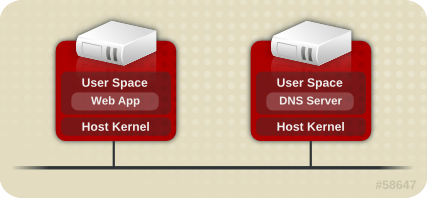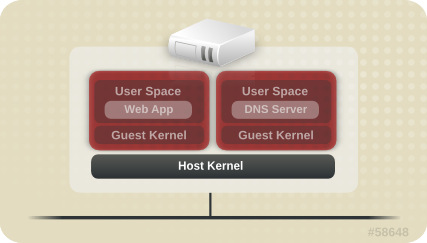Este contenido no está disponible en el idioma seleccionado.
Chapter 1. Introduction
1.1. Virtualized and Non-Virtualized Environments
In a non-virtualized environment, hosts are separated from each other physically and each host has a self-contained environment, which consists of services such as a web server, or a DNS server. These services communicate directly to their own user space, host kernel and physical host, offering their services directly to the network.
Figure 1.1. Non-Virtualized Environment
In a virtualized environment, several operating systems can be housed (as guest virtual machines) within a single host kernel and physical host.
Figure 1.2. Virtualized Environment

